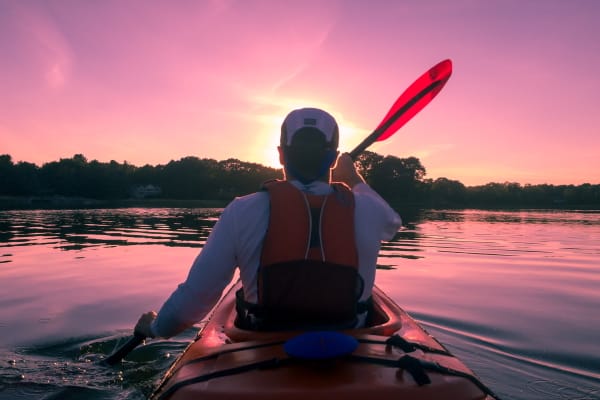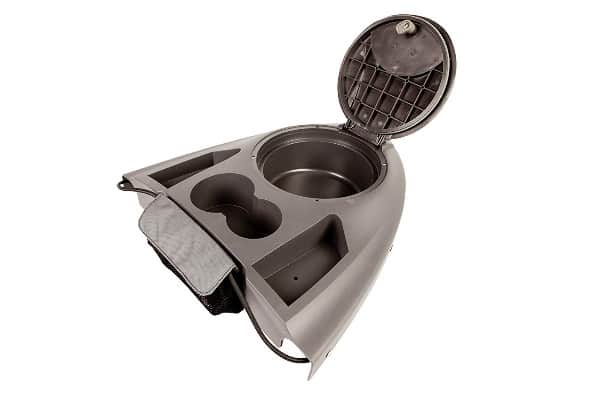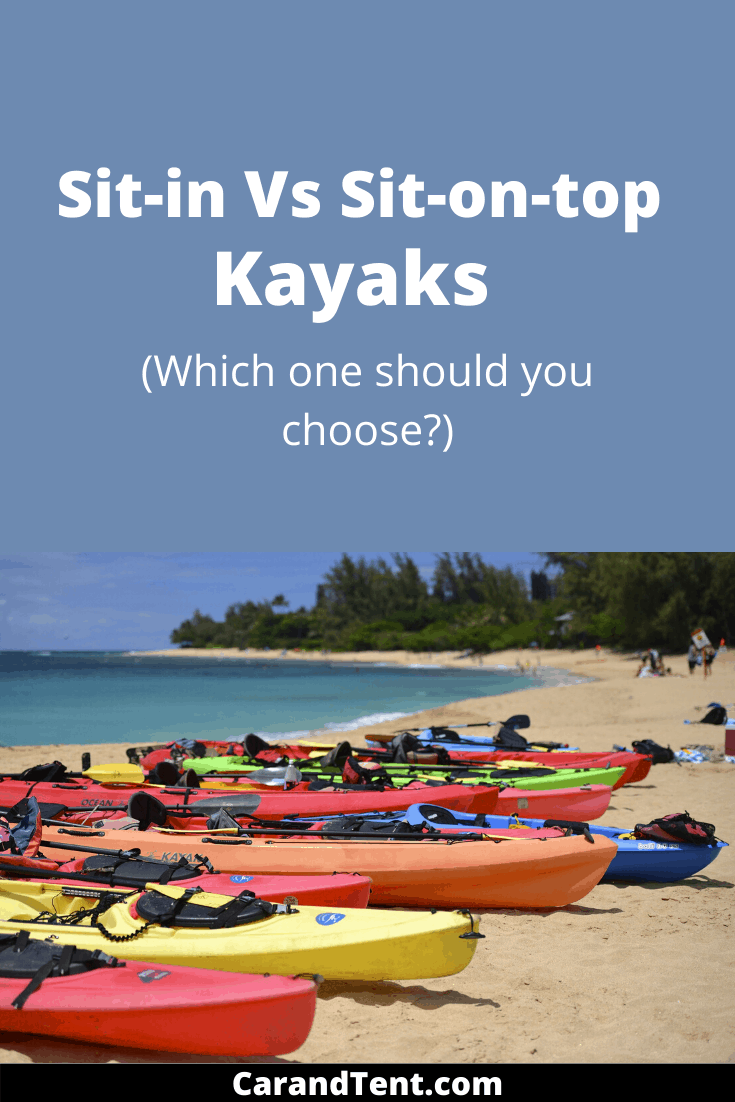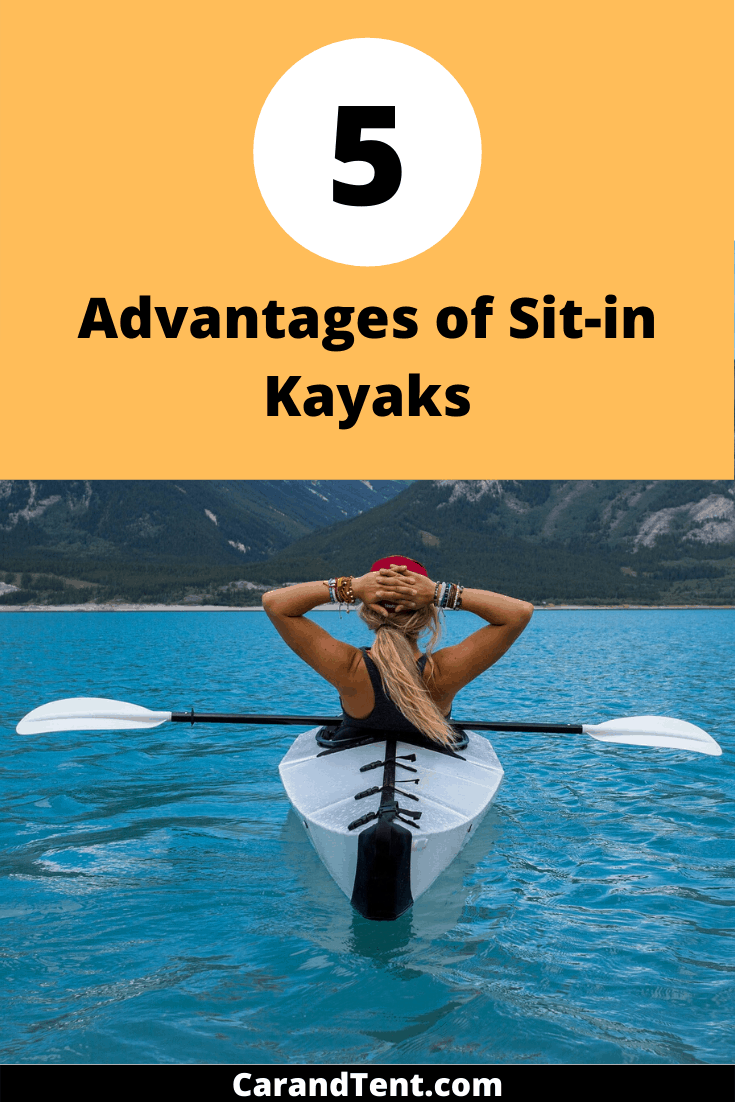
One of the first things people notice about kayaks is that some kayaks are designed as sit-in kayaks and some are designed as sit on top kayaks. This adds another layer of complexity and makes it even harder for beginners to buy a kayak.
In this post, I’ll make things easier for you by explaining the advantages and disadvantages of each. I’ll also explain the similarities between the two so you won’t have to guess at what might be different.
Table of Contents
Sit-in and Sit-on-top Kayaks
Before we talk about either type of kayak, it’s important to know that both of them share many similarities. For this reason, choosing one over the other won’t change the speed of the kayak, the stability of the kayak, or the general movement of the kayak through the water.
Also, neither kayak is necessarily better or worse in an ocean or on a lake. In fact, you’ll find both sit-in and sit-on-top kayaks designed for the ocean as well as for still water lakes.
When looking for a kayak that meets a certain type of water, stability, or speed requirement, you’ll look more at the design of the kayak. For example, some kayaks are longer than other kayaks, some have deeper hulls, and others are wider. These types of designs will ultimately determine how the kayak travels through the water and at what speed it travels.
Sit-in Kayak Advantages
Sit-inside kayaks are kayaks that have a large hole in the center for you to get in and out of. Once inside, your legs are completely covered by the front of the kayak.
Here are some of the advantages you’ll have when you choose a sit-in kayak over a sit-on-top kayak:
- They can be warmer.
- They can be dryer.
- You can roll.
- The kayak is usually lighter.
- You can accessorize the opening.
Sit-in Kayaks are Warmer and Dryer
A sit-in kayak puts you deeper into the kayak and protects your legs from the wind. The sides around the cockpit naturally remain dryer and you don’t have drainage holes, (aka scupper holes) in sit-in kayaks as you do on sit-on-top kayaks.
On top of this, you can add a cockpit skirt that keeps water from being able to enter your kayak. These features all work to help keep you both warm and dry while kayaking.
For these reasons, sit-in kayaks are much more popular during the colder months of the year. Combine a good cockpit skirt with a drysuit and kayaking turns into a four-season activity even in cold climates.
For more on dry suits, see my post titled, “What to Wear Kayaking“.
Sit-in Kayaks Allow for Rolling
Sit-in kayaks are built for easy rolling. Yes, you can roll a sit-on-top kayak, but you’ll need a set of straps to do it and it isn’t quite as easy.
Why roll?
If you’re new to kayaking you might wonder why a person would roll their kayak in the first place. Kayak rolling is typically done in whitewater conditions. Kayakers use the roll to quickly upright themselves during a capsize.
Here is a video of a simple combat roll in a kayak.
Weight
A sit-in kayak is generally lighter and less bulky than a sit-on-top kayak. It’s also easier to carry as you can grab it by the cockpit opening.
This makes long portages down the beach or through the woods much easier with this type of kayak. It also makes moving the kayak to and from your rooftop a whole lot easier as well.
Cockpit Accessories
The cockpit can act as a holding area for additional accessories. Some people will get clip-on cup holders and other accessories that make being out on the water easier or more enjoyable.
Here is a picture of a cockpit cup holder fitted onto a kayak.

Sit-on-top Kayak Advantages
- They are easier to get in and out of.
- They don’t have to be drained after a capsize.
- It’s much easier to get water out of the kayak.
- They can be cooler.
- They have more deck space.
- They don’t require any special training.
Entry and Exit
Sit-on-top kayaks don’t require you to slide your body into the kayak. This makes them much easier to get on even when you’re out on the water. Sit-inside kayaks, on the other hand, require a bit of skill to get in and out of. This is especially true if you’re climbing back into one while you’re out on the water.
More importantly, sit-on-top kayaks are easier to get out of. If you capsize a sit-on-top kayak, you’ll automatically fall out of it. With a sit-inside kayak, you’ll probably have to push yourself out via a “wet exit”. This isn’t as hard as it might seem but it can be scary for beginners.
Draining the Kayak
A sit-on-top kayak won’t fill up with water. In fact, it has drainage holes built right into it so it can’t fill up with water. This means that if you capsize, you can just flip the kayak over and hop right back in.
A flipped sit-inside kayak does need to be drained. Either the kayaker needs to hold the kayak up in the water to drain it or they need to drag their kayak to the land where they can drain it. If the kayaker does get water inside the kayak while it’s right side up, they need to use a bilge pump to draw the water out. These processes are all tedious and inconvenient so it’s nice not to have to deal with them in the sit-on-top kayaks.
Better in Warm Climates
Sit-on-top kayaks get you wet. In warm weather, this can be a huge benefit.
Also, because your body isn’t inside of a cockpit, you don’t have to worry about body heat getting trapped inside of your kayak. In fact, you’re not trapped inside your kayak either so you can always hop off and take a dip in the water whenever you feel too hot.
Deck Space
A sit-on-top kayak is just one large deck. This gives you extra space to store gear. In fact, many people will attach nets to their kayak decks so that they can store items outside of the hull storage without worrying about them falling off.
Less Training Needed
My first rental kayak was a sit-on-top kayak. The person renting it to me gave me 30 seconds of verbal instructions and then handed me the kayak and the paddle. This is typical of sit-on-top kayaks and it makes them accessible to everyone.
The reason for this is that sit-on-top kayaks aren’t very technical. You don’t have to worry about wet-exits or drainage or anything that requires any sort of special training. This makes them perfect kayaks for beginners and casual kayakers who don’t want to invest time in learning the ins and outs of the sport but still want to enjoy a day out on the water.
TL;DR
Sit-on-top kayaks are better for beginners and for people kayaking in warm weather. Sit-inside kayaks are better for more advanced kayaking and for colder weather.



